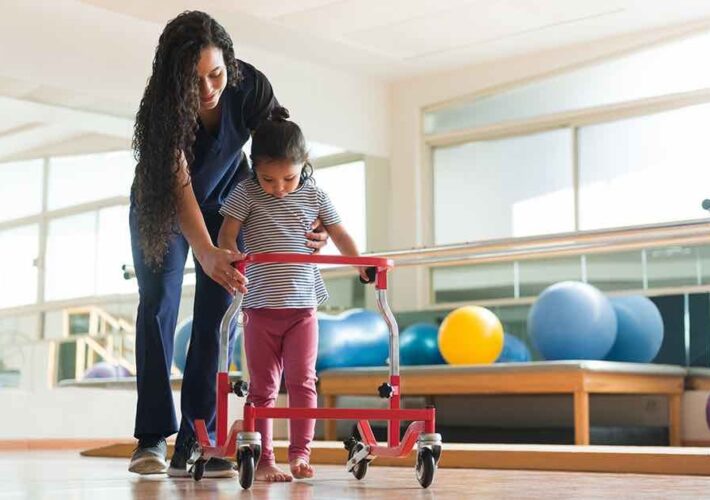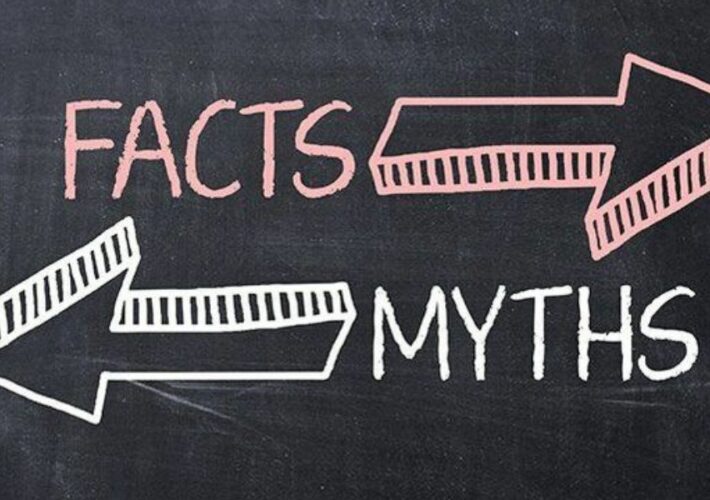Cerebral palsy is a neurological condition caused by brain damage that affects movement and posture. It’s the most common motor and movement disability of childhood. Cerebral palsy is often accompanied by disturbances in sensation, communication, intellectual ability, and behavior, as well as epilepsy and secondary problems of the musculoskeletal system that affect every aspect of a child’s life. The symptoms of cerebral palsy may vary greatly in type and severity among individuals, depending on which parts of the brain have been injured. If your child has been diagnosed with cerebral palsy, it’s important to know what to expect as a parent. For better decision making read the following article and get answers to all your questions.
TL;DR – the highlights:
- cerebral palsy describes a group of permanent disorders of the development of movement, posture, and balance, which cause limited activity
- the main cause of CP is brain damage that occurs in a developing fetus or during birth
- spasticity (stiffness) is the most common movement disorder affecting about 80% of children with CP
- clinical management of children with CP requires a multidisciplinary, family-centered approach, that focuses not only on physical health and development but also on maintaining or improving the child’s quality of life
What is cerebral palsy?
Cerebral palsy (CP) is the most common disability of childhood that affects muscle tone, movement, and motor skills as a result of injury to the developing brain.1,2 This is not a single disease but rather a heterogeneous clinical syndrome caused by brain damage before birth or in early childhood.2 CP motor disorders are often accompanied by disturbances in sensation, perception, cognition, communication, and behavior, as well as epilepsy and secondary problems of the musculoskeletal system.
Cerebral = means having to do with the brain
Palsy = means weakness or problems with using the muscles
It occurs in 2 to 3 out of every 1000 live births,1 the first clinical signs of CP can be seen any time before age of 3. Increased survival of very preterm infants has contributed to modest increases in CP prevalence in developed countries. However, improved neonatal care contributed to reduced severity of cerebral palsy. CP is a clinical diagnosis based on a combination of clinical and neurological signs. Diagnosis is usually made between 12 and 24 months of age.1 There is no cure, but treatments and therapies can make a big difference and increase a child’s independence.
Signs and symptoms
The clinical features of CP are varied and include a broad range of abnormalities. These are mostly movement disorders, but also include a spectrum of abnormalities such as poor balance and sensory deficits. Early motor features include unusual twitchy movements or abnormalities of movement and tone, including hypotonia (floppiness), spasticity (stiffness), or dystonia (fluctuating tone). Signs may also include abnormal motor development, including late head control, rolling, and crawling, as well as feeding difficulties.
| Neurological problems | Musculoskeletal problems | Associated problems |
|---|---|---|
| – muscle weakness | – contractures | – epilepsy |
| – abnormal muscle tone | – deformities | – visual problems |
| – balance problems | – hip displacement | – hearing loss |
| – loss of selective control | – speech and comunication | |
| – pathological reflexes | – feeding difficulty | |
| – loss of sensation | – respiratory problems | |
| – swallowing difficulty | – incontinence | |
| – intellectual impairment |
Early signs
Infants with CP often have developmental delays and can’t reach normal milestones at the appropriate time, such as learning to roll over, sit, crawl, or walk. Some infants with CP have abnormal muscle tone. Decreased muscle tone (hypotonia) can make them appear relaxed, even floppy. Due to increased muscle tone (hypertonia), they may appear stiff or rigid. In some cases, an initial period of hypotonia will progress to hypertonia after the first 2 to 3 months of life. Children with CP may also have unusual posture or favor one side of the body when reaching, crawling, or moving.
A recent study revealed that the most common symptoms seen were using one hand before 2 years of age, the absence of spontaneous movements, and the presence of primitive reflexes after a definite period.3,4 Swallowing problems and poor oral motor skills are among the first clinically recognizable symptoms in the neonatal period.4 In infants 3 to 6 months of age, some of the observed features are decreased neck control, stiffness, floppiness, arching of the back, lower limb stiffness, and crossing legs when raising from the bed, and in babies older than 6 months, no rolling can be seen. Incoordination of the upper limbs or favoring one side of the body over the other is also evident. Babies older than 10 months show abnormal crawling.5 Some behavioral signs suspicious for CP include excessive irritability, poor sleeping, frequent vomiting, difficulty handling and cuddling, and poor visual attention.6

NOTE: It’s important to note that some children without CP also might have some of these signs.
What causes CP?
The abnormal development of the brain or brain damage is the cause of CP, but many different things can trigger damage that leads to CP. It can happen before birth, during birth, within a month after birth, or during the first years of a child’s life, while the brain is still developing. For this reason, the exact cause of CP can’t always be determined. Possible causes include poor brain development in the womb, maternal infections or medical conditions, disruption of blood flow to the developing brain, genetic conditions, ingestion of toxins or drugs during pregnancy, damage to the head or skull during delivery, or complications related to premature delivery.
| Prenatal | Perinatal | Postnatal (0-2 years) |
|---|---|---|
| – prematurity (less than 36 weeks) | – premature rupture of membranes | – central nervous system infection (e.g., encephalitis) |
| – low birth weight (less than 2500 g) | – vaginal bleeding at the time of admission for labor | – hypoxia (low levels of oxygen) |
| – maternal epilepsy | – prolonged and difficult labor | – seizures |
| – hyperthyroidism | – bradycardia (slow heart rate) | – neonatal hyperbilirubinemia |
| – eclampsia | – low Apgar score | – head trauma |
| – infections (e.g., toxoplasmosis) | ||
| – drug abuse | ||
| – trauma | ||
| – multiple pregnancies | ||
| – placental insufficiency |
How is cerebral palsy diagnosed?
Establishing the diagnosis and cause is essential to enable meaningful decisions regarding treatment and prognosis. Early diagnosis helps to provide intervention at the beginning of development. There’s no single or simple test for CP. It’s usually based on clinical findings along with physical assessments and neuroimaging combined with an assessment of the mother’s medical history.5
Close monitoring of early signs in the form of neurobehavioral signs, the presence of developmental reflexes that haven’t resolved with time, abnormal tone and posture, and delayed milestones is essential for screening at-risk infants.
The diagnosis of CP in children without risk factors often occurs later in life when parents or general pediatricians realize that they are not reaching their expected motor milestones. Signs that call for special evaluation for CP include the inability to sit independently by 9 months of age, and the presence of asymmetric movements or limb preference.7,8
Below are some common tests and assessments used to evaluate an infant at risk for CP:
- Apgar scoring: It determines a newborn’s overall health within the first few minutes of life.
- Neuroimaging: These examinations provide images of brain structures and activity. MRI is the most used to determine the type and extent of brain damage.
- Neuromotor assessment: 2 assessments that have been found to have the highest predictive value for CP detection in early infancy – the General Movement Assessment, which evaluates the spontaneous movements of infants, and the Hammersmith Infant Neurologic Examination, which evaluates an infant’s cranial nerve function, posture, movements, tone, and reflexes.7
It’s important that medical professionals diagnose cerebral palsy as early as possible. The sooner children are diagnosed, the sooner they can begin treatment and therapy to minimize impairments and improve functional abilities. But keep in mind that the diagnosis of CP at or before a child’s first birthday is not entirely reliable. It’s important to distinguish between CP diagnosed at an early age solely based on neurological findings and CP accompanied by clear evidence of a disability. Thus, a diagnosis made after 2 years of age is more reliable.
What is the prognosis for children with CP?
Many children diagnosed with CP have the same life expectancy as other children, as early diagnosis and better therapies have improved many health conditions for them. Although CP doesn’t usually shorten life expectancy, it does require early intervention and good medical care for the best outcomes. This is especially true for those with severe disabilities.
Common misconceptions:
- children with CP will be in a wheelchair – CP varies in severity and although there are children who use wheelchairs, many are able to walk and run without any assistance
- children with CP can’t talk – as the disorder has varying degrees of severity, some children may not be able to speak, but there are several options for them to still be able to communicate (e.g., communication boards, sign language, and electronic tablets)
- career choices are limited for children with CP – there have been tremendous improvements in workplace disability legislation, making it easier than ever for children to get and keep paid employment as they grow up
- my child’s CP can be cured – this is one myth that, while it would be nice if it were true, it just isn’t, at least not yet. There is currently no cure for CP. But, this doesn’t mean your child can’t have a healthy and productive life. Today there are so many advances in medicine that most children with CP continue to thrive and live happy lives with help of physical therapy, counseling, medications, and more.
REFERENCES:
- Vitrikas K, Dalton H, Breish D. Cerebral Palsy: An Overview. Am Fam Physician. 2020 Feb 15;101(4):213-220. PMID: 32053326.
- Aisen ML, Kerkovich D, Mast J, Mulroy S, Wren TA, Kay RM, Rethlefsen SA. Cerebral palsy: clinical care and neurological rehabilitation. Lancet Neurol. 2011 Sep;10(9):844-52. doi: 10.1016/S1474-4422(11)70176-4
- Garfinkle J, Li P, Boychuck Z, Bussières A, Majnemer A. Early Clinical Features of Cerebral Palsy in Children Without Perinatal Risk Factors: A Scoping Review. Pediatr Neurol. 2020 Jan;102:56-61. doi: 10.1016/j.pediatrneurol.2019.07.006
- Aisen ML, Kerkovich D, Mast J, Mulroy S, Wren TA, Kay RM, Rethlefsen SA. Cerebral palsy: clinical care and neurological rehabilitation. Lancet Neurol. 2011 Sep;10(9):844-52. doi: 10.1016/S1474-4422(11)70176-4
- Paul S, Nahar A, Bhagawati M, Kunwar AJ. A Review on Recent Advances of Cerebral Palsy. Oxid Med Cell Longev. 2022 Jul 30;2022:2622310. doi: 10.1155/2022/2622310
- Gulati S, Sondhi V. Cerebral Palsy: An Overview. Indian J Pediatr. 2018 Nov;85(11):1006-1016. doi: 10.1007/s12098-017-2475-1
- Michael-Asalu A, Taylor G, Campbell H, Lelea LL, Kirby RS. Cerebral Palsy: Diagnosis, Epidemiology, Genetics, and Clinical Update. Adv Pediatr. 2019 Aug;66:189-208. doi: 10.1016/j.yapd.2019.04.002
- Novak I, Morgan C, Adde L, Blackman J, Boyd RN, Brunstrom-Hernandez J, Cioni G, Damiano D, Darrah J, Eliasson AC, de Vries LS, Einspieler C, Fahey M, Fehlings D, Ferriero DM, Fetters L, Fiori S, Forssberg H, Gordon AM, Greaves S, Guzzetta A, Hadders-Algra M, Harbourne R, Kakooza-Mwesige A, Karlsson P, Krumlinde-Sundholm L, Latal B, Loughran-Fowlds A, Maitre N, McIntyre S, Noritz G, Pennington L, Romeo DM, Shepherd R, Spittle AJ, Thornton M, Valentine J, Walker K, White R, Badawi N. Early, Accurate Diagnosis and Early Intervention in Cerebral Palsy: Advances in Diagnosis and Treatment. JAMA Pediatr. 2017 Sep 1;171(9):897-907. doi: 10.1001/jamapediatrics.2017.1689




